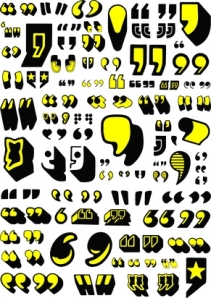Here’s an old, old lesson in retailing that apparently many still don’t get: If you say it, mean it. In all communications with customers, particularly. Otherwise, your customers will doubt you/hate you/sneer at you/insert bad thing here.
My own illustration of this came just a few days ago, in a grocery store. I typically don’t shop at this particular large chain, because I just don’t like the atmosphere and I can’t seem to find things. Plus, they often don’t stock much in the way of organic.
I went to this store to grab a couple ingredients for some soup, because it was the closest place and I was in a hurry. And I went in thinking that since this store has a reputation for being cheaper than my preferred grocer, possibly I should rethink my bias.
The cold rain did not improve my mood. When I got inside the store, the grocery carts were all some form of wet. I hate that. My preferred store makes sure that the carts closest to the entrance are the ones that haven’t been used recently, so they’re least likely to be wet. Oh, and they make it a point to go get carts quickly when it’s raining.
But back to where I was actually shopping. I found the cream quickly enough, but the canned tomatos took a couple guesses. There weren’t any canned tomatos close to the pasta sauces, which I found strange. Two aisles over, in an erratically stocked section, I finally found some fire-roasted tomatoes. I took all but one can of the ones they had on sale. I felt sorry for the next person that wanted them on sale, but hey I was making soup for 30.
I had brought a reusable bag with me, and gave it to the cashier. Keep in mind that I had a gallon of cream and 17 cans of tomatoes. Neither the bagger nor the cashier asked me whether I wanted all of my items in the reusable bag or not, unlike the baggers and cashiers at my preferred store. The bagger just crammed all 17 cans and the four quarts of cream in one bag. I’d say it easily weighed 25 pounds.
There’s no way I can carry 25 pounds of dead weight. I’ve had abdominal surgery in the past year, and I have to be very careful about what I carry or risk a hernia and another surgery to fix that. I ended up grabbing some plastic bags from the self-serve kiosk to distribute the load better.
I did notice that the company’s slogan was embroidered on the cashier’s shirt: Where Customers Are #1. Too bad I didn’t feel like it.



 Unless the tea, coffee or water is completely frozen or a frozen slush, those signs scream blatant spelling mistake. The tea and coffee has been poured over ice, as has the water, so they are
Unless the tea, coffee or water is completely frozen or a frozen slush, those signs scream blatant spelling mistake. The tea and coffee has been poured over ice, as has the water, so they are  Instead, I’m highlighting five common phrases that are guaranteed to clunk up business writing, and give you some substitutes for cleaner, clearer prose.
Instead, I’m highlighting five common phrases that are guaranteed to clunk up business writing, and give you some substitutes for cleaner, clearer prose. Like so many things we learned in school, we must now unlearn this belief. For Gen Y, it’s easy; you haven’t been burdened with decades of reinforcement. But for us old Gen Xers and Boomers, it’s hard. Our knee-jerk reaction is to pick up the red pen (or font) and scribble a terse “S.O.” (spell out).
Like so many things we learned in school, we must now unlearn this belief. For Gen Y, it’s easy; you haven’t been burdened with decades of reinforcement. But for us old Gen Xers and Boomers, it’s hard. Our knee-jerk reaction is to pick up the red pen (or font) and scribble a terse “S.O.” (spell out).
